Scar on nose from pimple. Keloid and Hypertrophic Scars from Acne: Causes, Treatment, and Prevention
What are keloid and hypertrophic scars. How do they differ from each other. What factors increase the likelihood of developing these scars. What treatments are available for keloid and hypertrophic scarring. How can you prevent these types of scars from forming.
Understanding Keloid and Hypertrophic Scars: The Aftermath of Acne
Acne can leave lasting marks on our skin, with keloid and hypertrophic scars being some of the most prominent. These raised lesions of scar tissue result from an overgrowth of fibrous tissue in areas where acne lesions have healed. While they share similarities, there are distinct differences between these two types of scars.
Keloid Scars: When Healing Goes Beyond Borders
Keloid scars are characterized by their tendency to grow beyond the boundaries of the original acne lesion. These scars continue to expand over time, often becoming significantly larger than the initial wound. They can appear as smooth, hard growths that feel rubbery to the touch and may be itchy or painful.
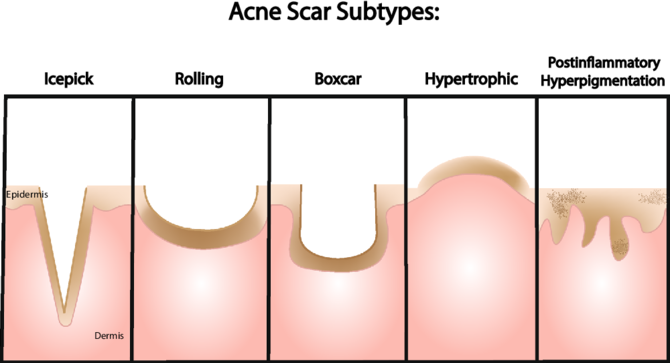
Hypertrophic Scars: Staying Within Limits
Unlike keloids, hypertrophic scars remain within the confines of the original acne lesion. While they are raised and thickened, they do not extend beyond the borders of the initial wound. These scars tend to be more common than keloids and may improve over time without intervention.
The Science Behind Scar Formation: Why Some People Are More Prone
The formation of keloid and hypertrophic scars is not a universal experience for everyone who suffers from acne. Several factors contribute to an individual’s likelihood of developing these types of scars.
- Genetic predisposition
- Skin type and ethnicity
- Severity and depth of acne inflammation
- Age and hormonal factors
- Skin care habits and acne treatment approach
Do certain skin types have a higher risk of developing keloid and hypertrophic scars? Indeed, individuals with darker skin tones, particularly those of African, Asian, or Hispanic descent, are more susceptible to these types of scars. This increased risk is due to genetic factors that influence collagen production and wound healing processes.
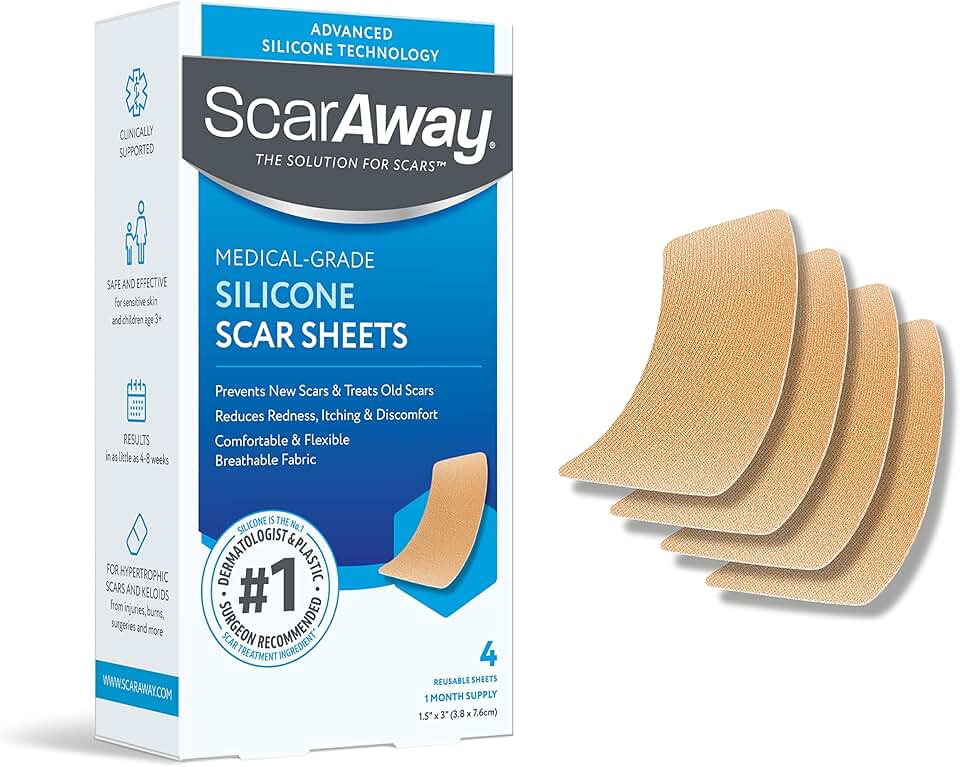
The Role of Inflammation in Scar Formation: A Key Player in Acne Scarring
Inflammation plays a crucial role in the development of acne scars, including keloids and hypertrophic scars. The deeper the inflammation penetrates into the skin, the higher the likelihood of scarring upon healing. This underscores the importance of early and effective acne treatment to minimize the risk of deep-seated inflammation.
How does inflammation contribute to scar formation? When acne lesions become severely inflamed, they can damage the surrounding skin tissue and disrupt the normal healing process. This disruption can lead to an overproduction of collagen and other fibrous tissues, resulting in the raised, thickened appearance of keloid and hypertrophic scars.
Behavioral Factors: How Your Actions Can Influence Scar Formation
While some factors contributing to scar formation are beyond our control, certain behaviors can significantly increase the risk of developing keloid and hypertrophic scars.
The Perils of Picking and Squeezing
One of the most common and damaging habits is picking or squeezing acne lesions. This can introduce additional bacteria into the skin, exacerbate inflammation, and cause further tissue damage. All of these factors increase the likelihood of scarring.
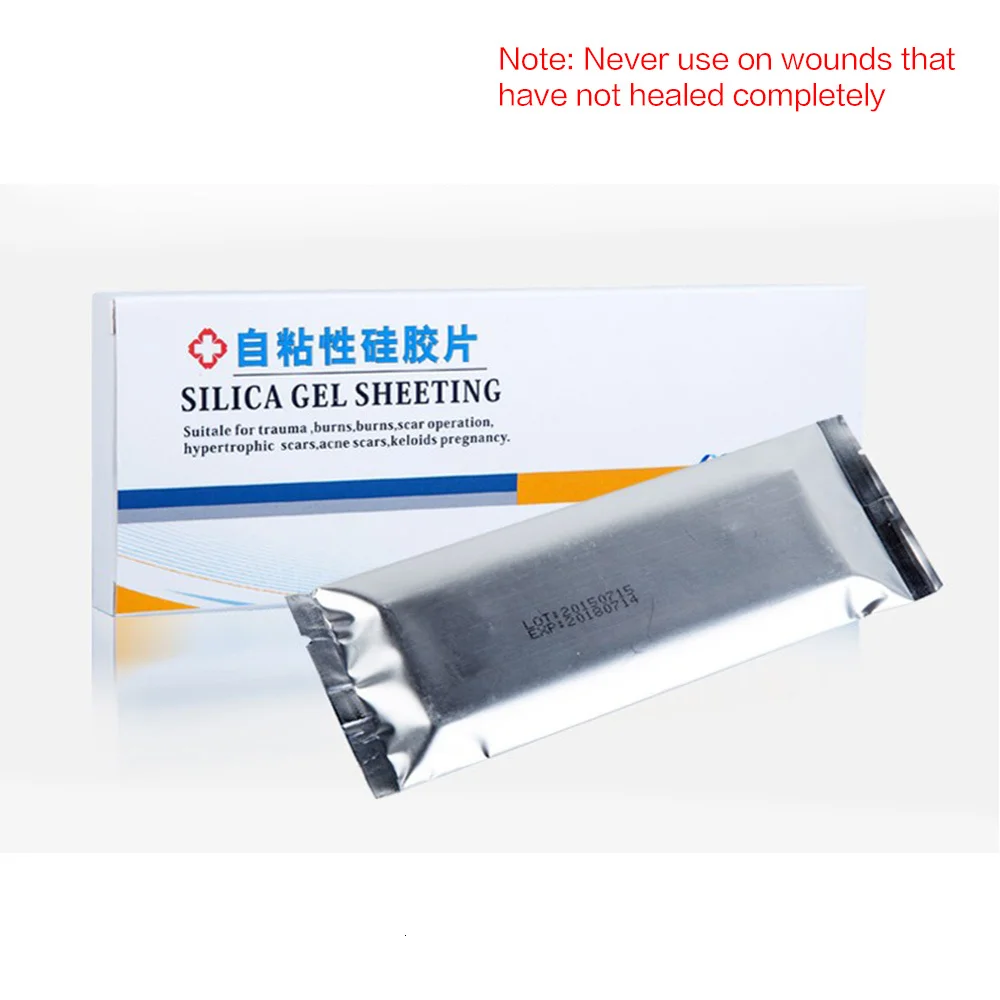
Is there a safe way to remove pus from acne lesions? While it’s always best to resist the urge to squeeze, if you must extract pus, follow proper techniques to minimize skin damage. Use clean hands and tools, apply gentle pressure, and immediately treat the area with an antibacterial solution.
The Impact of Smoking on Scar Formation
Smoking is another behavioral factor that can increase the risk of scarring. Nicotine and other toxins in cigarettes can impair blood flow and oxygen delivery to the skin, hindering the healing process and promoting excessive scar formation.
Treatment Approaches: Addressing Keloid and Hypertrophic Scars
Treating keloid and hypertrophic scars typically involves a two-stage approach. The first stage aims to reduce the height of the scar, flattening it to match the surrounding skin. The second stage focuses on addressing any residual discoloration in the flattened scar.
Stage One Treatments: Flattening the Scar
- Steroid Injections: Corticosteroids are injected directly into the scar to soften and thin the fibrous tissue.
- Dermabrasion: A specialized tool is used to remove the top layers of skin through controlled abrasion.
- Chemical Peels: High concentrations of glycolic or salicylic acid are applied to remove outer skin layers.
- Laser Therapy: Both ablative and non-ablative laser treatments can be effective in reducing scar thickness.
How many steroid injections are typically needed for optimal results? Multiple injections are often required, usually spaced 4 to 6 weeks apart. The exact number varies depending on the size and severity of the scar.
![]()
Stage Two Treatments: Addressing Discoloration
Once the scar has been flattened, treatments to address any remaining discoloration may include:
- Topical bleaching agents
- Chemical peels
- Laser treatments targeting pigmentation
- Microneedling with or without radiofrequency
Advanced Treatment Options: Cutting-Edge Approaches to Scar Reduction
As medical technology advances, new and innovative treatments for keloid and hypertrophic scars continue to emerge. These cutting-edge approaches offer hope for those struggling with stubborn or severe scarring.
Cryotherapy: Freezing Away Scar Tissue
Cryotherapy involves freezing the scar tissue with liquid nitrogen. This treatment can be particularly effective for smaller keloids and hypertrophic scars. The freezing process damages the scar tissue, causing it to eventually slough off.
5-Fluorouracil (5-FU) Injections
5-FU is a chemotherapy drug that, when injected into scar tissue, can inhibit the growth of fibroblasts responsible for excessive collagen production. It’s often used in combination with corticosteroid injections for enhanced efficacy.
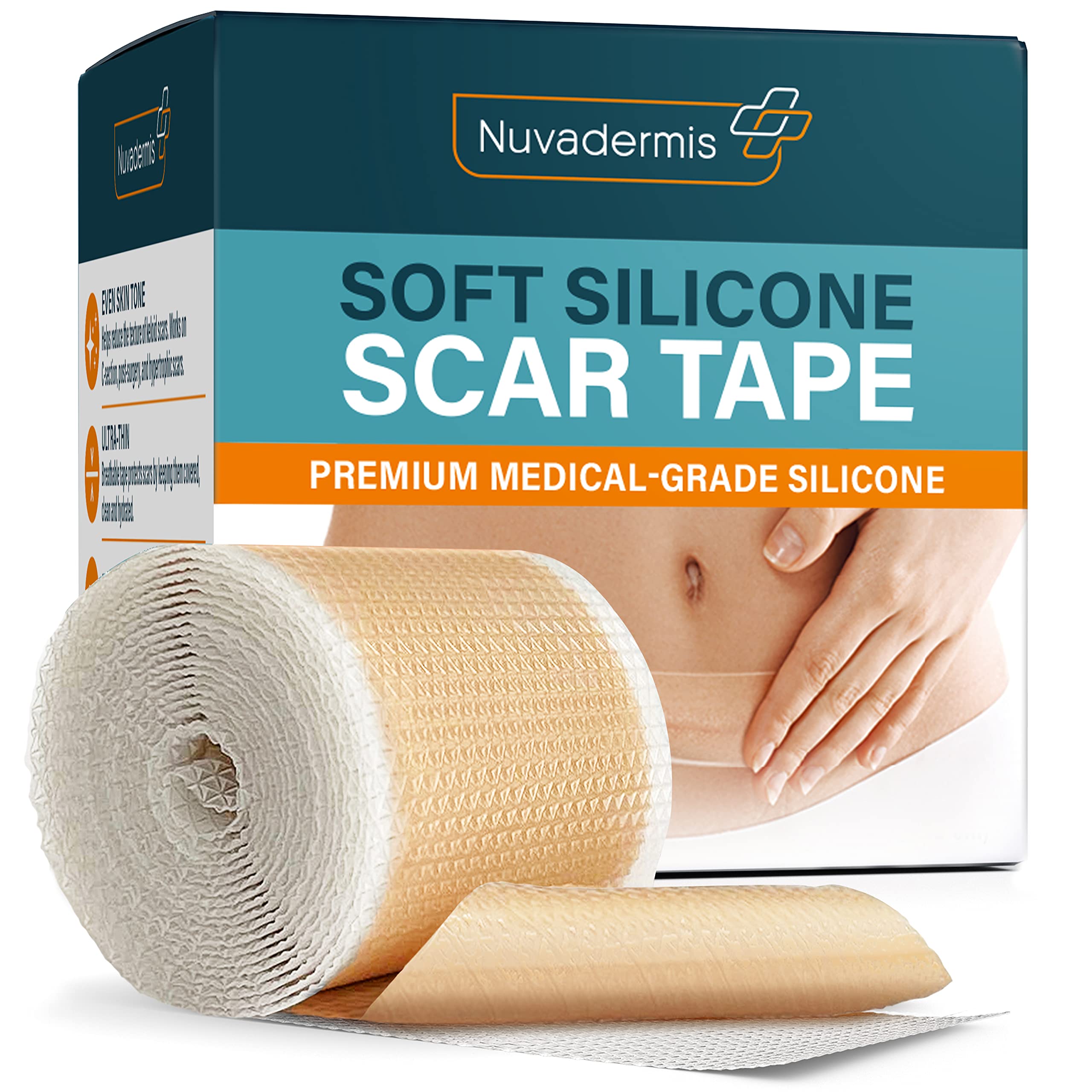
Silicone-Based Treatments
Silicone sheets or gels applied to scars can help reduce their size and improve appearance. These products work by creating a protective barrier that promotes hydration and regulates collagen production.
How long should silicone-based treatments be used for optimal results? Consistent application for at least 12 hours a day over several months is typically recommended to see significant improvement.
The Importance of Professional Guidance: Choosing the Right Treatment Path
When considering treatment for keloid and hypertrophic scars, it’s crucial to seek guidance from qualified professionals. Dermatologists and plastic surgeons specializing in scar treatment can provide personalized advice based on your specific case.
Factors Influencing Treatment Selection
- Scar size and location
- Skin type and tone
- Previous treatment history
- Individual healing tendencies
- Patient preferences and lifestyle considerations
Why is it important to choose a practitioner who offers multiple treatment options? A provider with expertise in various scar reduction techniques can tailor the treatment plan to your unique needs, combining different approaches for optimal results.
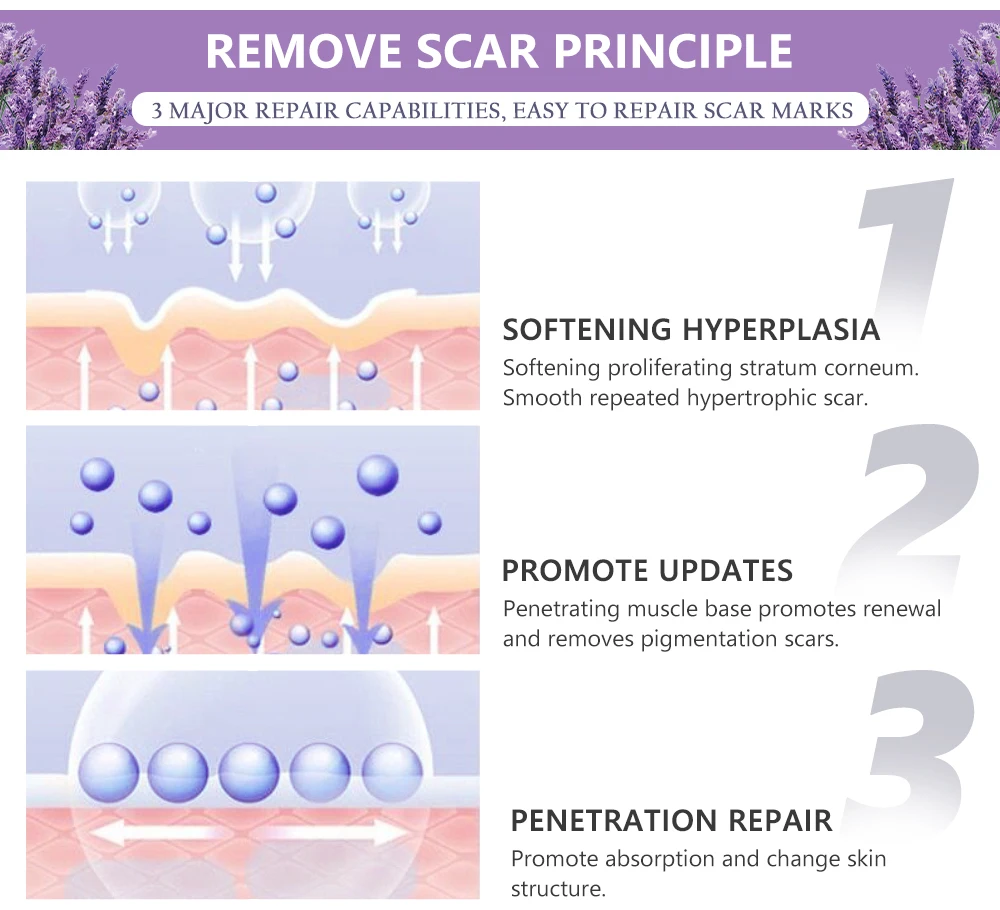
Potential Risks and Side Effects: What to Consider Before Treatment
While treatments for keloid and hypertrophic scars can be highly effective, they are not without risks. It’s essential to be aware of potential side effects and complications before proceeding with any treatment.
Common Side Effects
- Skin irritation and redness
- Temporary changes in skin pigmentation
- Mild pain or discomfort during and after treatment
- Skin dryness or peeling
More Serious Complications
In rare cases, more severe complications may occur, including:
- Infection
- Permanent changes in skin texture or color
- Scarring from the treatment itself
- Allergic reactions to treatment materials
Are individuals with darker skin tones at higher risk for complications? Yes, people with darker skin types may be more susceptible to certain side effects, particularly changes in pigmentation. This emphasizes the importance of seeking treatment from a practitioner experienced in treating diverse skin types.

Prevention Strategies: Minimizing the Risk of Keloid and Hypertrophic Scars
While it’s not always possible to prevent keloid and hypertrophic scars entirely, there are steps you can take to minimize your risk, especially if you’re prone to this type of scarring.
Early and Effective Acne Treatment
Treating acne promptly and effectively is crucial in preventing severe inflammation that can lead to scarring. This may involve:
- Using over-the-counter acne treatments containing salicylic acid or benzoyl peroxide
- Consulting a dermatologist for prescription treatments if OTC options are insufficient
- Adhering to a consistent skincare routine tailored to your skin type
Gentle Skin Care Practices
Adopting gentle skincare habits can help protect your skin and reduce the risk of scarring:
- Avoid picking, squeezing, or popping acne lesions
- Use non-comedogenic and hypoallergenic skincare products
- Protect your skin from excessive sun exposure
- Keep your skin well-hydrated
Scar Prevention Techniques
If you’ve recently had an acne lesion heal, consider these strategies to minimize the risk of keloid or hypertrophic scar formation:
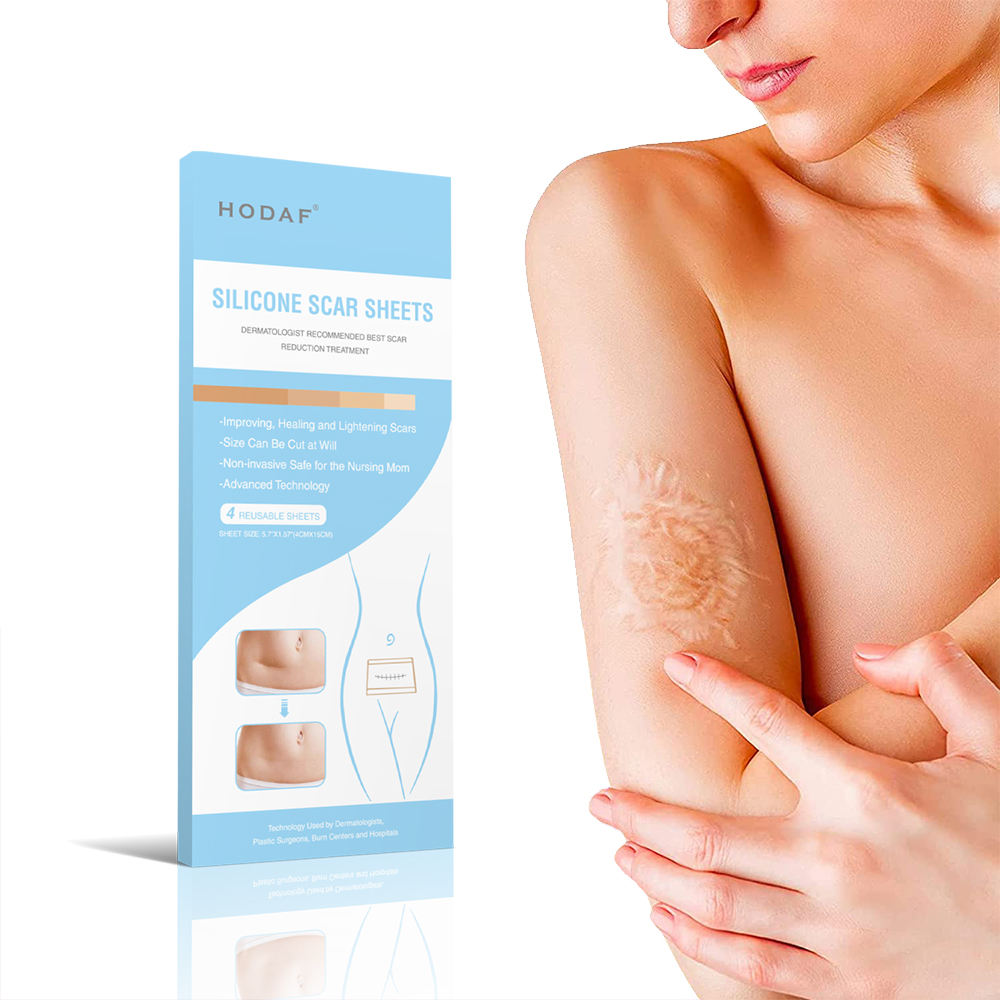
- Apply silicone-based scar gels or sheets to healing areas
- Use pressure therapy with specially designed garments or bandages
- Consider prophylactic treatments such as steroid injections for high-risk areas
How soon after an acne lesion heals should you start using scar prevention techniques? It’s generally recommended to begin scar prevention strategies as soon as the wound has closed and any scabs have fallen off naturally. Early intervention can significantly improve outcomes.
Living with Keloid and Hypertrophic Scars: Psychological and Social Impacts
The effects of keloid and hypertrophic scars extend beyond physical appearance, often impacting an individual’s psychological well-being and social interactions. Understanding and addressing these aspects is crucial for comprehensive care.
Emotional and Psychological Challenges
Many individuals with visible scarring may experience:
- Decreased self-esteem and body image issues
- Anxiety in social situations
- Depression or mood changes
- Frustration with ongoing treatment processes
Coping Strategies and Support
Developing healthy coping mechanisms and seeking support can greatly improve quality of life for those dealing with keloid and hypertrophic scars:

- Joining support groups or online communities
- Practicing self-acceptance and positive self-talk
- Seeking professional counseling or therapy when needed
- Educating friends and family about the condition
How can individuals build resilience when dealing with the psychological impacts of scarring? Developing a strong support network, focusing on personal strengths and accomplishments, and engaging in activities that boost self-confidence can all contribute to building resilience.
Future Directions in Keloid and Hypertrophic Scar Treatment
The field of scar treatment is continually evolving, with researchers exploring new approaches to improve outcomes for patients with keloid and hypertrophic scars.
Emerging Therapies
- Gene therapy targeting collagen production
- Stem cell treatments to promote healthy skin regeneration
- Advanced biologic agents to modulate the wound healing process
- Combination therapies utilizing multiple treatment modalities
Personalized Medicine Approaches
The future of keloid and hypertrophic scar treatment may lie in personalized medicine, tailoring treatments to an individual’s genetic makeup and specific scar characteristics.
![]()
What role might artificial intelligence play in the future of scar treatment? AI could potentially analyze vast amounts of patient data to predict treatment outcomes, optimize treatment plans, and even assist in the development of new therapies.
As research progresses, individuals affected by keloid and hypertrophic scars can look forward to more effective and personalized treatment options. However, it’s important to remember that current treatments can still offer significant improvements when administered by experienced professionals.
Keloid and Hypertrophic Scars – acne support
What are keloid and hypertrophic scars?
Keloid and hypertrophic scars are common types of scarring that can occur as a result of the acne healing process. They appear as raised lesions of scar tissue on the skin and are a result of the overgrowth of fibrous tissue in the region where the acne lesion had developed.
They are more common on the chest, back and shoulders, where the skin is thicker, although they can occur around the jaw line. They are also more common in people with darker skin types.
What is the difference between keloid and hypertrophic scars?
The difference between keloid and hypertrophic scars is their size in relation to the acne lesions that caused them. A keloid scar is larger than the acne lesion that caused it. A hypertrophic scar is the same size as the acne lesion that caused it.
What factors make it more likely that keloid and hypertrophic scars will form?
Like all acne scars, the formation of keloid and hypertrophic scars is largely dependent on how your skin heals. If you tend to scar easily then you are more likely to develop acne scars.
If you tend to scar easily then you are more likely to develop acne scars.
Inflammation also plays a key role in development of acne scars. The deeper that inflammation from an acne lesion reaches into the skin the more likely it is to scar upon healing. This is one of the reasons that it is important to treat acne as soon as possible, to lower the risk of deep inflammation.
Picking or squeezing acne lesions can damage the skin and lead to an increased chance of scarring. It is not advised that you pick at or squeeze your acne. However, in reality many people do this in an attempt to remove pus. If you are insistent on picking at or squeezing your acne to remove pus then please see our guide on how to lower your chances of damaging your skin here.
You are also more likely to develop acne scars if you smoke, as smoking leads to an increased risk of scarring in general.
People with darker skin types are also at a higher risk of developing thicker keloid and hypertrophic scars as they have a variety of genetic factors that increase the likelihood of thickened scars occurring.
Keloid and Hypertrophic Scar Treatments
Treatment for keloid and hypertrophic scarring comes in two stages, as it does for other acne scarring. First stage treatments for keloid and hypertrophic scarring are designed to reduce the height of the scar so that the skin’s surface returns to being flat. Second stage treatments for keloid and hypertrophic scarring are aimed at reducing skin discolouration in the newly flat scar.
It is important to remember that scar reduction treatments are not readily available on the NHS. If you are thinking about paying for a scar reduction treatment privately then be sure to research your practitioner and make certain that they are qualified to conduct the procedure, such as a Consultant Dermatologist or Plastic Surgeon. It is often advisable to use a practitioner who can carry out all of the various forms of scar reduction treatments that are discussed above, as they will be able to advise you on the best option for your skin colour and nature of scarring.
Please note that all of the treatments below have potential side effects, such as burns, skin peeling, irritation, skin bleaching and changes to skin texture. Darker skin types are at higher risk of suffering the side effects of scar removal. Please talk to your healthcare provider to find out more about the risks involved for any treatment that you may be considering.
Stage One Treatments
Steroid Injections
This is where steroids are injected directly into the scar to soften and thin the fibrous tissue, lowering the scar’s height. It often takes several steroid injections spaced 4 to 6 weeks apart to achieve the best results.
Dermabrasion
This is where a special tool is used to remove the top layers of skin through friction, not unlike a sanding machine. As the layers of skin are removed the keloid or hypertrophic scar becomes flatter.
As the layers of skin are removed the keloid or hypertrophic scar becomes flatter.
Chemical Peels
This treatment works by removing the outer layers of skin using high concentrations of glycolic or salicylic acid.
Laser Therapy
Laser therapies work in two ways. Ablative laser therapy uses high energy light to remove the outer layers of skin whilst encouraging new collagen production in the lower layers of skin. Non-ablative laser therapy uses heat to encourage new collagen production in the skin without damaging the outer layer. The removal of the outer layers and/or the production of new collagen results in a reduction in scar height. There are multiple laser therapies that are available for the treatment of acne scarring. A consultant dermatologist will be able to determine which treatment is right for you based on your skin colour and the nature of your scarring.
Stage Two Treatments
Dermabrasion
This is where a special tool is used to remove the top layers of skin through friction, not unlike a sanding machine. As the layers of skin are removed the discolouration caused by scarring can become reduced.
Microneedling
This treatment is sometimes known as collagen induction therapy. It works by using a special tool to create several, tiny injuries within a scar. These injuries usually heal within two days and new collagen is formed inside of the scar. Collagen is a protein that help gives our skin strength and elasticity. Through this process microneedling can reduce the discolouration associated with scarring by encouraging old skin cells to shed, including skin cells that have been discoloured by excess pigment. Multiple treatments tend to be required every four-six weeks to gain maximum benefits. It is important to note that reducing skin discolouration is not microneedling’s main purpose and targeted treatments designed for treating skin discolouration may work better.
It is important to note that reducing skin discolouration is not microneedling’s main purpose and targeted treatments designed for treating skin discolouration may work better.
Chemical Peels
This treatment works by removing the outer layers of skin using high concentrations of glycolic or salicylic acid. In doing so, it can reduce the discolouring that is associated with scarring. This treatment should only be carried out by a qualified practitioner (visit www.jccp.org.uk).
Laser Therapy
Ablative laser therapy uses high energy light to remove the outer layers of skin, which can reduce the discolouration that is associated with scarring. There are multiple laser therapies that are available for the treatment of acne scarring. A consultant dermatologist will be able to determine which treatment is right for you based on your skin colour and the nature of your scarring.
We do not recommend that you pop your acne lesions (spots). Instead, you should use a safe, targeted acne treatment. To find out more about the treatments that are available, and how you can cover your acne lesions, visit the Treatments and Covering Acne sections of this website.
Picking or squeezing acne lesions can damage the skin and lead to an increased chance of scarring. It is not advised that you pick or squeeze your acne. However, in reality many people do this in an attempt to remove pus, blackheads or whiteheads. If you are insistent on picking at or squeezing your acne to remove pus, blackheads or whiteheads then you should follow our guide below to lower your chances of damaging your skin and scars forming.
It is important to note that this technique does not remove the risk of permanent scarring.
Warnings
- We do not recommend that you pop or squeeze your acne lesions. Instead, you should use a safe, targeted acne treatment.
 To find out more about the treatments that available, and how you can cover your acne, visit the Treatments and Cover-Up sections of this website.
To find out more about the treatments that available, and how you can cover your acne, visit the Treatments and Cover-Up sections of this website. - This guide is designed to help lower the risk of permanent injury to the skin for people who are insistent upon squeezing their acne spots. However, scarring and skin damage are still risk factors even when following this guide.
- Do not apply anything more than gentle pressure in an attempt to drain more pus. You will be at risk of squeezing only inflamed skin, which cannot drain, and force the acne-causing blockage deeper into the follicle.
- If you squeeze out blood then you should stop. Squeezing out blood is not the only time when you should stop. Never apply anything more than gentle pressure and stop if the pus, blackhead or whitehead does not easily release.
Guide
Step one: Gently cleanse and sterilise the acne lesion, surrounding skin and your hands using an anti-bacterial skin wash.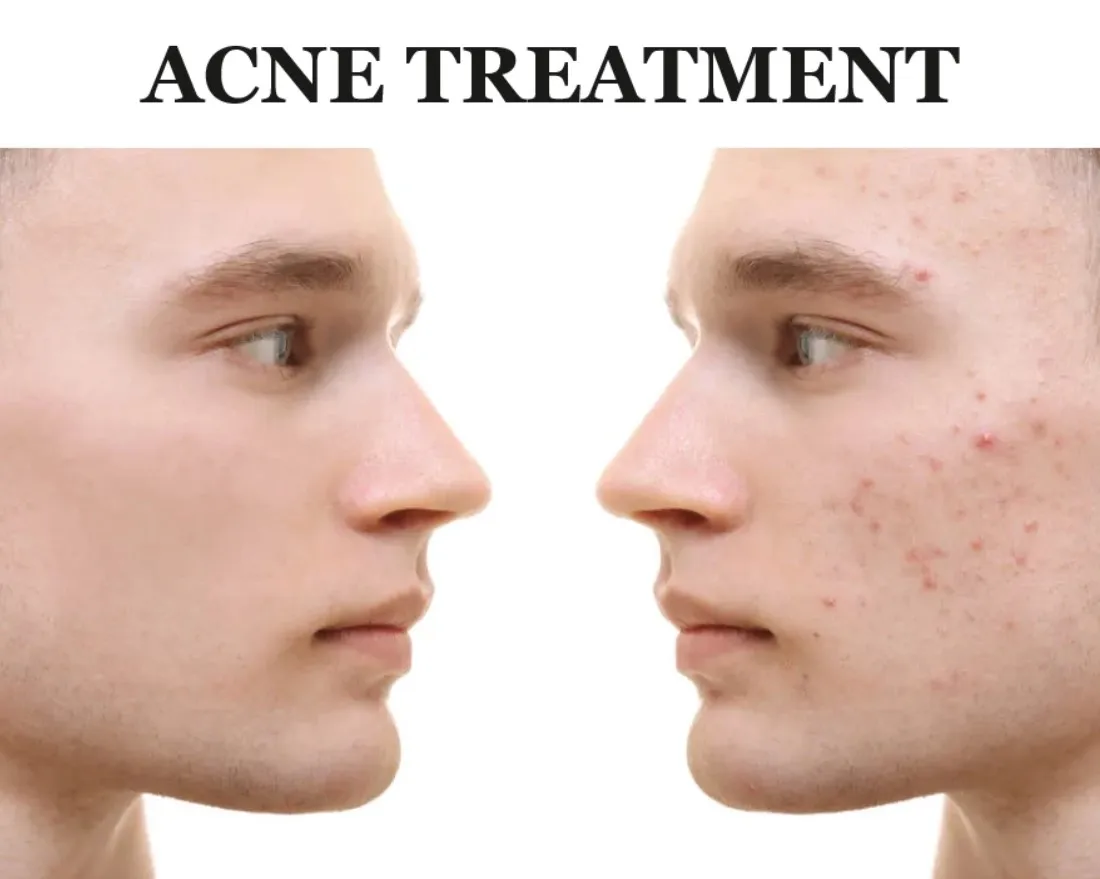
Step two: Place the tips of your index fingers either side of the acne lesion.
Step three: Applying gentle pressure, press your fingers downwards and towards each other. Don’t use your nails as you may break the skin, risking infection. If pus or the blockage is not released then DO NOT apply more pressure and leave the acne lesion alone.
Step four: Gently re-cleanse the area of skin and your hands.
Step five: Apply an acne treatment to the acne lesion/area.
If pus or a blockage does not release after following this guide then do not apply further pressure. You will be at further risk of causing permanent damage to the skin, forcing the blockages deeper into the skin, and breaking the follicle wall, which can result in inflamed acne and acne cysts forming.
Scar Removal On Nose – Get Rid Of Acne Scars, Nose Piercing And Pores
Getting a pimple on nose can be unsightly and painful. And more than just the pimple, it leaves behind a scar which is even more displeasing. Fortunately, with proper treatments, acne scars on nose can be successfully treated.
And more than just the pimple, it leaves behind a scar which is even more displeasing. Fortunately, with proper treatments, acne scars on nose can be successfully treated.
Understanding Scars On Nose
Scars on nose can manifest in two major ways. The first type of nose scarring is sunken or “holey” scars, scientifically known as atrophic scars. They can be the result of very large open pores, scabs from accidents or acne. The other type of scar is called hypertrophic scars, which are raised and bumpy. Hypertrophic scars are usually caused by nose piercing or trauma.
Dark Acne Scars On Nose
If you ever had acne and it managed to spread on your nose, then it would have left some form of scar behind. Acne scars are usually pitted or atrophic in nature. They can be best described as scars that leave “little holes” on the skin. Acne can also cause hyperpigmentation which is basically a dark mark/blemish on nose.
- Raised Acne Scars – Raised acne scars fall under the category of hypertrophic scars.
 These scars are bumpy due to the excessive production of collagen by the body. The body produces more collagen during the healing process than needed in order to recover the lost skin and tissues.
These scars are bumpy due to the excessive production of collagen by the body. The body produces more collagen during the healing process than needed in order to recover the lost skin and tissues. - Severe Acne And Scarring – Cystic acne can appear on any part of the face even on nose. These cystic pimples are very painful and large and it can leave huge scars on nose. These scars are mainly atrophic in nature (pitted, scooping holes) and they require special medical attention to heal and fade.
Must Read: What Is The Cost Of Acne Scar Removal In India?
Nose Piercing Scars
Scars can occur on nose piercing site if proper care is not taken. Nose scars due to piercing usually come in 2 variations; common scars and keloids. Common scars are small, often red in color and they fade away on their own. However, keloid scars are a type of hypertrophic scars that are troublesome to treat. Hypertrophic and keloid scars are large, bubble-shaped and protruding.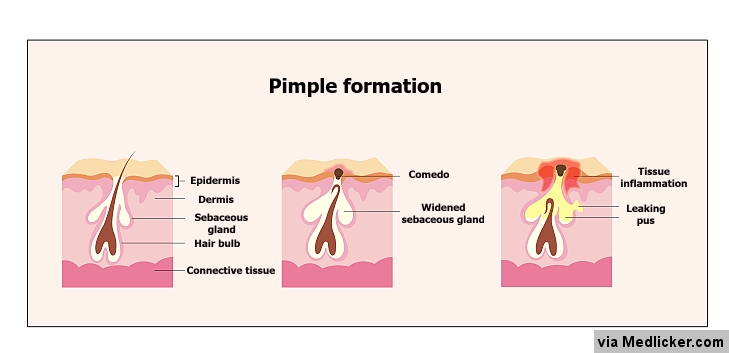 The only difference between hypertrophic scars and keloids are that the latter is easier to heal. Nose piercing scars are due to poor aftercare, infection or allergic reaction to the jewelry.
The only difference between hypertrophic scars and keloids are that the latter is easier to heal. Nose piercing scars are due to poor aftercare, infection or allergic reaction to the jewelry.
Must Watch
Nose Scar Removal Treatments
Whether a scar has popped up on your nose because of an accident, incorrect pimple extraction, disease, nose piercing, injury, etc., there are plenty of cosmetic treatments that will help you overcome any type of scar you may have on your nose. All the treatments mentioned below work on atrophic, hypertrophic and hyper-pigmented acne scars.
- Laser Skin Resurfacing – Considered a multipurpose beauty machine, Laser can heal any type of pimple related scars. Laser therapy uses heat and light to gently target the upper layer of the skin. The Laser helps to exfoliate and remove the damaged skin to reveal younger and firmer-looking skin.
 The laser can be used on all types of atrophic scars and hyperpigmentation.
The laser can be used on all types of atrophic scars and hyperpigmentation.
- Chemical Peels – Removing scars by using chemical peels is not only safe but also highly effective. Peels can activate and speed up the skin’s natural healing process by lifting away dead skin cells. Always seek expert’s help if you wish to undergo chemical peel treatment. It is important to follow proper pre and post-care when it comes to the chemical peel.
- Over The Counter Creams – Many substances like retinoids and benzoyl peroxide were used traditionally to get rid of pimple scars on nose. Though they may not be effective they can help fade the appearance of the scars slightly also clearing the surrounding skin. Check with your dermatologist for a specific topical cream for your pimple scar.

Must Read: Advanced Acne Scar Treatment
How to remove acne marks and get rid of scars and scars from post-acne: procedures at the cosmetologist
Stagnant spots left after acne are skin defects that are often found in owners of problem skin. These traces may disappear on their own, but this takes years. We will tell in the article about effective home and cosmetic methods for removing spots or post-acne after inflammatory rashes.
Causes
The face is everyone’s “visiting card”. Inflammation, acne or pimples occur on the skin of a person, regardless of age or gender. Not everyone considers rashes a problem, squeezing them out without fear or trying to mask them with a thick foundation. These actions lead to the appearance of stagnant spots after acne.
Causes of inflammation
There are many factors that provoke inflammation in the form of acne or pimples. Let’s list them:
- Heredity;
- Hormonal disorders;
- Diseases of the digestive tract;
- Age changes;
- Poor hygiene;
- Improper maintenance.

Why spots remain
The appearance of stagnant spots is caused by increased production of melanin, a pigment that gives the epidermis a dark color. Pigment cells accumulate in the area of the inflammatory focus. The severity of the spot will depend on the following reasons:
- Intensity of inflammation;
- Skin features;
- The very fact of treatment.
Timely initiated therapeutic measures will not start the inflammatory process. This will be the best prevention of spots after acne or acne.
Sign up to our studio online and get a 25% discount on your first visit!
Select time
Species
Congestive spots are visible on the face not only due to local darkening of the skin, but also manifestations in the form of scars or red bumps that make the microrelief uneven. There are three types:
- Dark scars. Frequent problem. Skin defects appear if you actively squeeze a pimple or remove a crust from it that has formed during wound healing.
 In this place, melanin is intensively produced, hyperpigmentation occurs;
In this place, melanin is intensively produced, hyperpigmentation occurs; - Hypertrophic scars. We are talking about scars that remain after rashes with pustules – pimples with a white dense mass enclosed inside, rising above the epidermis;
- Atrophic scars or post-acne. They can be single, resembling the remaining traces after chickenpox, but much smaller in diameter. There are rashes in the form of “asterisks” – uneven microrelief, visually similar to wounds with protracted skin, and “pits” – visible depressions on the skin that occur against the background of untreated acne.
Regardless of the type of spots or scars, they spoil the appearance of people to one degree or another, so everyone wants to get rid of them.
How to remove stains forever
First of all, it is necessary to treat inflammatory rashes. To do this, you need to find the cause of the pathology by contacting a dermatologist. He will clarify the situation after the diagnosis, select the appropriate course of treatment or refer you to narrow specialists (endocrinologist, gastroenterologist).
But what can still be done if there are already treacherous scars or pigmentation, how to deal with it? Let’s consider further.
Cosmetology
Aesthetic procedures in the salon will help to achieve the maximum effect in removing acne marks. Beauticians of the ICE-FACE clinic will individually select a set of techniques that suit the needs of your particular skin.
Peels cleanse the skin from the inside with ultrasound or chemical compositions. There are many variations of peels, and each is aimed at solving a specific problem. For example, almond peeling will gently cleanse and even out the microrelief, while “instant brightening” peeling will carefully remove the manifestations of hyperpigmentation, preventing its recurrence. The cosmetologist selects peeling taking into account the condition of the skin, carefully conducting the session without discomfort for the patient.
LED therapy or light therapy is a technique that is effective for hyperpigmentation, scars or cicatricial changes. Removes acne and post-acne, normalizing the production of sebum. Improves the tone, color, microrelief of the epidermis.
Removes acne and post-acne, normalizing the production of sebum. Improves the tone, color, microrelief of the epidermis.
Laser resurfacing is an improved version of hardware dermabrasion. A safe method eliminates invasive exposure, exfoliating the stratum corneum due to laser exposure. The skin color looks more even, traces of inflammation disappear, the vascular network or pronounced capillaries disappear.
Alginate masks with a powerful moisturizing effect. The tool has a detoxifying, firming, antioxidant, regenerating effect. Fights skin pigmentation, evens out complexion.
Carboxytherapy is a comfortable soft way to rejuvenate, improve skin turgor, post-acne correction. The technique saturates the tissues with carbon dioxide, triggering natural tightening processes, healing, restoring the natural color of the skin.
Also suitable for fighting acne spots are massages – Tibetan, chiromassage, Jacquet massage, cryomassage. By improving the quality of the skin, massage techniques restore a healthy complexion, allowing you to remove the symptoms of pigmentation.
home and cosmetic scar treatment
Acne is always a problem, both aesthetically and medically. However, often getting rid of them does not mean the end of the fight against the disease, because post-acne may appear in place of yesterday’s inflammation. Eliminating acne marks is not as easy as it might seem at first glance, but it is possible. The main thing is to regularly follow the treatment recommendations. Read more about all the ways to get rid of post-acne – from affordable home to high-tech and professional.
Tags:
acne
acne
Dermatologist’s advice
acne treatment
The editors warn readers against self-treatment and do not recommend self-diagnosis, prescribing medications and procedures. For any signs of malaise, contact your doctor.
Contents of the article
The main secret of an effective fight against post-acne is to start treatment at the right time. To begin with, you should finally get rid of the cause of the rashes, and only then work with the traces. Eliminating both in parallel, although possible, is pointless, because the appearance of new acne can also result in the appearance of new post-acne marks. In addition, some of the medical methods discussed in this material reduce the effectiveness of acne treatment and should not be used at the time of acne therapy.
To begin with, you should finally get rid of the cause of the rashes, and only then work with the traces. Eliminating both in parallel, although possible, is pointless, because the appearance of new acne can also result in the appearance of new post-acne marks. In addition, some of the medical methods discussed in this material reduce the effectiveness of acne treatment and should not be used at the time of acne therapy.
Types of post-acne
Before you start taking action against post-acne, you should understand what type of acne marks your case is. Further actions and the severity of the problem depend on this.
Atrophic or depressed scars
Atrophic scars most often appear on the face. They look like pits and have a pinkish tint. The reason for the appearance of depressed scars is the lack of collagen at the time of skin healing from inflammation.
ADVERTISING – CONTINUED BELOW
There are three types of atrophic scars
U-shaped – this type of scars is characterized by an acute shape of the edges and can be both small and large.
 The smaller the U-shaped scars, the easier they are to remove with skin resurfacing procedures.
The smaller the U-shaped scars, the easier they are to remove with skin resurfacing procedures.Round – often these scars cover a large area, but they are easier to remove than other types of scars.
V-shaped – the most difficult type of scars to treat. And although they may be very small in size, they are considered the deepest, which is why they are less amenable to therapy.
Hypertrophic scars
These scars are most commonly seen with acne on the chest and back. Unlike atrophic “dimples” scars, on the contrary, they rise above the skin surface and appear due to an excess of collagen during healing.
Dark spots
Perhaps the most harmless type of post-acne. The color of the skin after the disappearance of the pimple may become purple, red or purple. With the right measures, this trace will disappear in just a few months.
Do you have acne marks?
Post-acne home treatment
Before starting any type of post-acne treatment, you should visit a dermatologist. The doctor will help determine the best way to eliminate the defect, as well as make sure that you really have post-acne on your skin, and not something else – which is quite possible!
The doctor will help determine the best way to eliminate the defect, as well as make sure that you really have post-acne on your skin, and not something else – which is quite possible!
Alpha Hydroxy Acids
Alpha Hydroxy Acids (AHAs) are a common ingredient in cosmetics designed to treat acne. They help remove dead skin cells and prevent clogged pores. Also, AHAs will help make acne scars less noticeable.
Suitable for all types of post-acne.
Lactic acid
Another highly effective cosmetic ingredient for problem skin. According to studies, a course of lactic acid peels significantly improves skin texture and minimizes not only post-acne, but also hyperpigmentation.
Experts recommend doing lactic acid peels in the cold season, once every two weeks for three months. If we are not talking about a professional cosmetic procedure, but about home remedies, it will not be difficult to find creams, serums and peels with lactic acid on sale.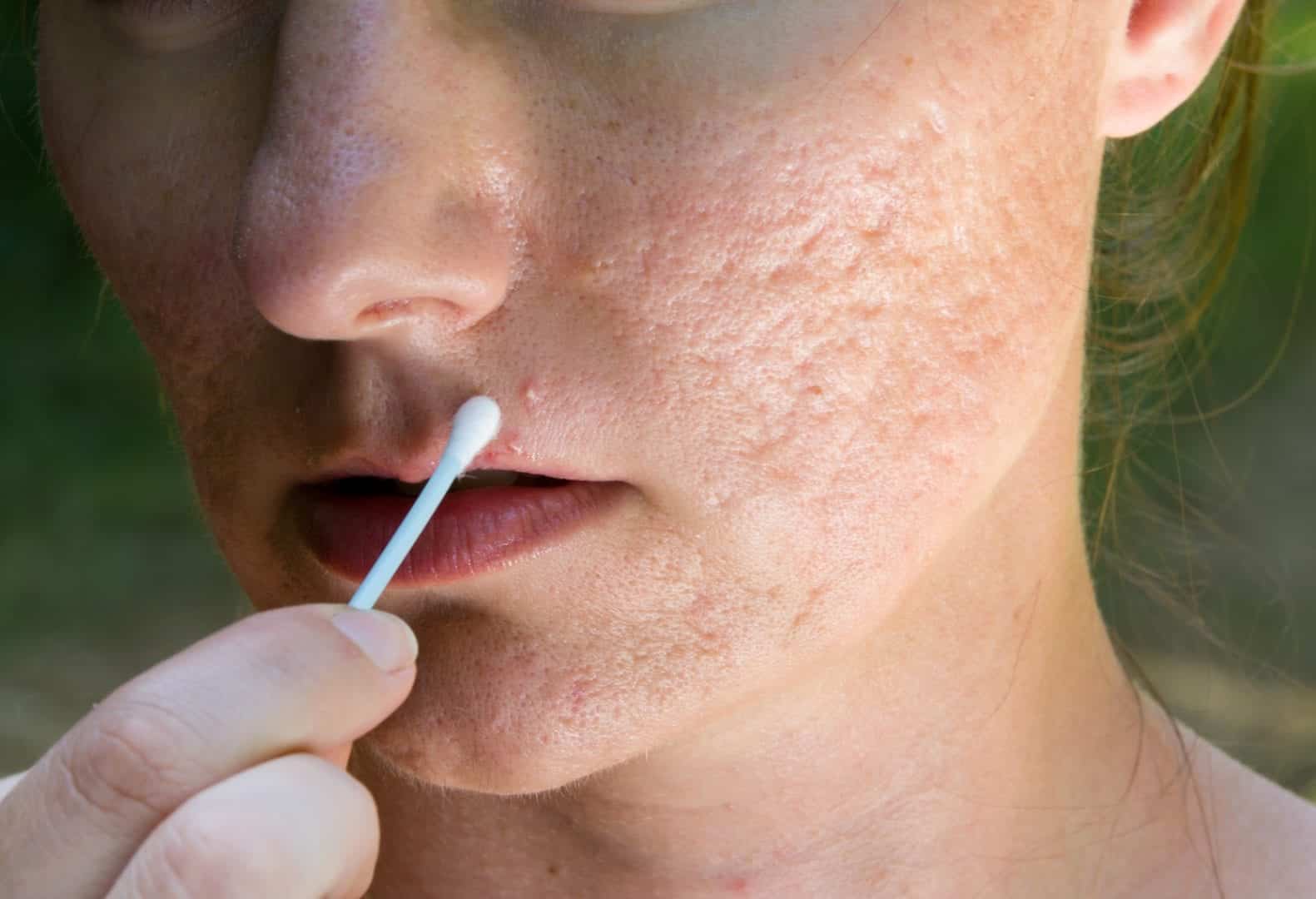 You can also use diluted apple cider vinegar instead of tonic, it contains natural lactic acid, but this economical method has every chance of affecting the skin condition not as favorably as we would like.
You can also use diluted apple cider vinegar instead of tonic, it contains natural lactic acid, but this economical method has every chance of affecting the skin condition not as favorably as we would like.
Suitable for all types of post-acne.
Retinoids
Topical retinoids are another well-known acne remedy that smoothes post-acne and improves skin regeneration. However, retinoids should not be considered harmless – they have many contraindications, greatly increase skin sensitivity to the sun and can cause an allergic reaction. That is why, before you start using them, you need to consult a dermatologist. In addition, the doctor can choose a more powerful dosage of retinoids for you, which cannot be bought without a prescription.
Retinol for the face: complete instructions for use and a list of the best products
Creams and serums with retinol are freely available – do not forget to use sunscreen when using them.
Suitable for atrophic scars.
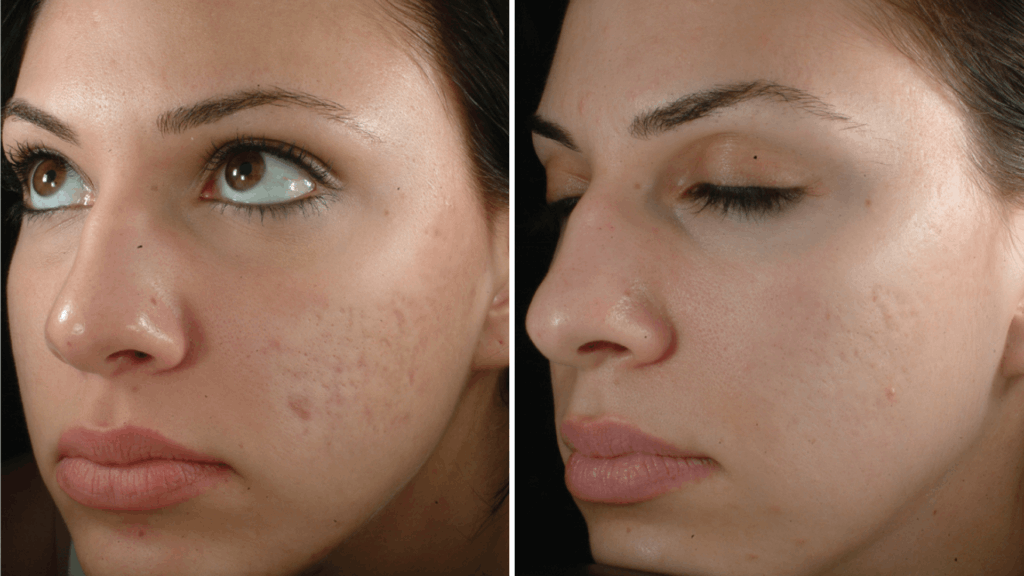
Salicylic acid
Perhaps the most common ingredient in cosmetics for problem skin – you’ve probably already used gels for washing, serums and lotions with salicylic acid.
Salicylic acid unclogs pores, reduces redness, and exfoliates the skin when applied topically. It is considered one of the best components for home treatment of acne and post-acne. In addition, salicylic acid is recommended to be used even with sensitive skin, but only pointwise and very carefully.
Suitable for all types of post-acne.
Sunscreen
No, no, we didn’t mix anything up! Daily use of sunscreen is essential in the treatment of post-acne. The active influence of sunlight can make the scars brighter and more noticeable, while the protective agent will prevent the problem from getting worse.
Suitable for all acne scars.
Dermatological treatments
Of course, it would be great if home care could be as effective as professional treatments. However, if we are talking about deep scars, it is better to find an opportunity to contact a dermatologist, and not experiment with cosmetics.
However, if we are talking about deep scars, it is better to find an opportunity to contact a dermatologist, and not experiment with cosmetics.
Dermabrasion
Dermabrasion is one of the most effective and common treatments for post-acne. This rather traumatic procedure is based on a complete renewal of the upper layer of the skin with the help of special discs for facial resurfacing.
Suitable for atrophic scars, but not very deep. V-shaped scars after dermabrasion can become even more noticeable.
Chemical peels
This is not about masks and serums with a complex of acids that can be used on a daily basis. A chemical peel is a strong concentration of acid that is used to remove the top layer of skin.
Some chemical peels are considered mild enough for home use. But more pronounced and “deep” results will be given by the procedure in the dermatologist’s office.
Suitable for all types of post-acne, especially for deep scars.

Laser resurfacing
Like chemical peels and dermabrasion, laser resurfacing removes the top layer of skin, but is considered a much more traumatic procedure and requires recovery time, and long enough, during which it is difficult to maintain normal social activity. However, laser resurfacing gives amazing results and is the only post-acne treatment option that can be started when acne is still not completely eliminated.
Not for everyone! All about laser resurfacing of the face: what is worth enduring for
Suitable for all types of post-acne.
Fillers
Of course, fillers are not the most affordable and common option for removing post-acne, but in some situations they can be a lifesaver.
Acne fillers are made from collagen or the patient’s own fat. Most fillers mask marks on the skin for a period of 6-18 months, but some, judging by the studies, can have a permanent effect.
Suitable for a small number of atrophic scars.
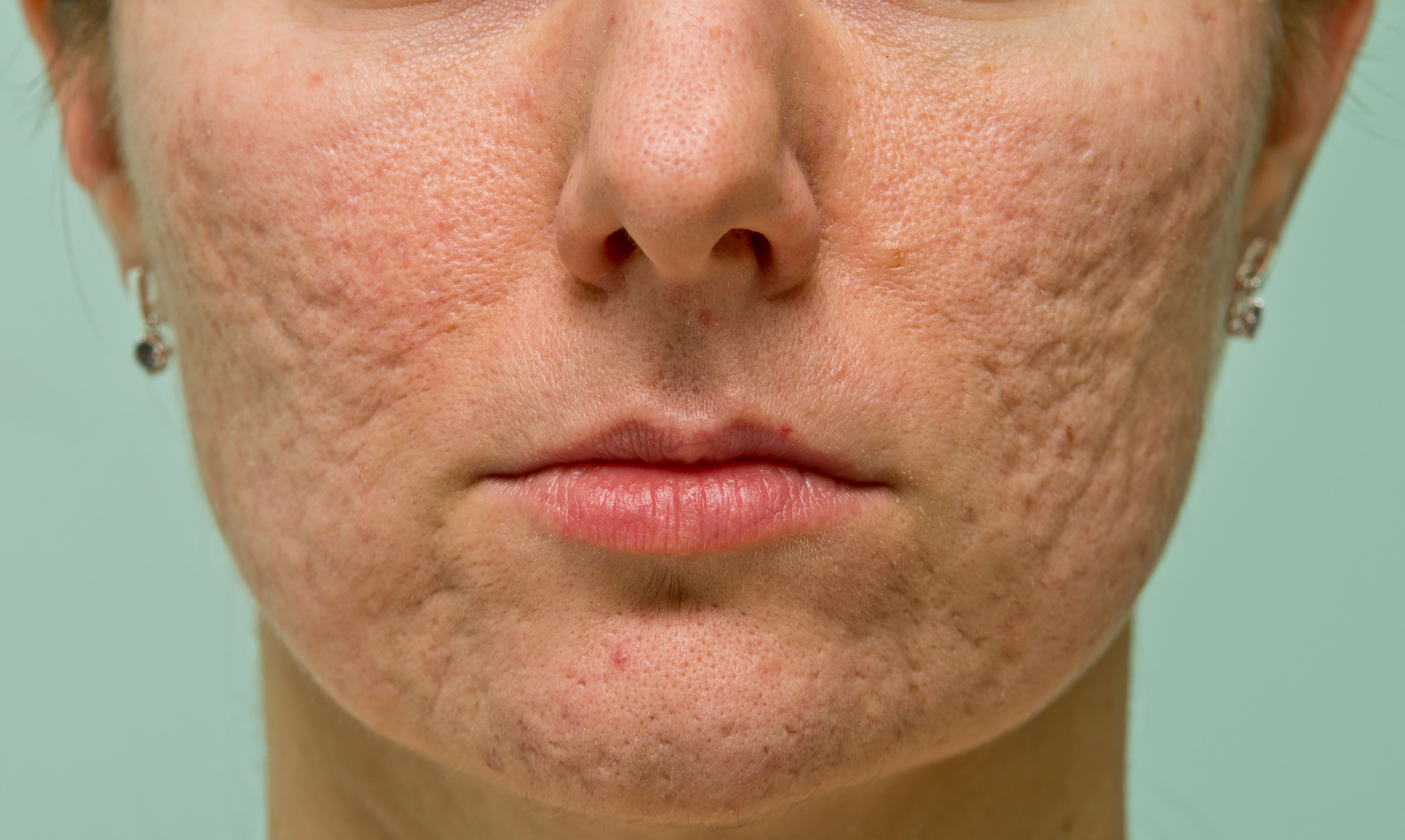
Microneedling
The essence of the technique is the deliberate traumatization of the skin using a special roller with needles. It is believed that superficial piercing of the skin provokes increased production of collagen, and post-acne becomes less noticeable. Just get ready: to see the effect, you need to undergo a course of procedures lasting at least 9 months.
Suitable for atrophic scars.
Injections
Among dermatological preparations, there are several types of injections (corticosteroids, interferons, chemotherapy drugs) that can be used to treat hypertrophic scars. Such drugs are injected into scars to soften and smooth them.
Suitable for hypertrophic scars.
Surgery
We are talking about such a method as subcision – cutting deep scars with special needles to make the scar less noticeable and speed up its healing. This procedure is also called bioskinjetting, but it is important to find a trusted professional who owns this new technology.

 To find out more about the treatments that available, and how you can cover your acne, visit the Treatments and Cover-Up sections of this website.
To find out more about the treatments that available, and how you can cover your acne, visit the Treatments and Cover-Up sections of this website. These scars are bumpy due to the excessive production of collagen by the body. The body produces more collagen during the healing process than needed in order to recover the lost skin and tissues.
These scars are bumpy due to the excessive production of collagen by the body. The body produces more collagen during the healing process than needed in order to recover the lost skin and tissues. The laser can be used on all types of atrophic scars and hyperpigmentation.
The laser can be used on all types of atrophic scars and hyperpigmentation.

 In this place, melanin is intensively produced, hyperpigmentation occurs;
In this place, melanin is intensively produced, hyperpigmentation occurs; The smaller the U-shaped scars, the easier they are to remove with skin resurfacing procedures.
The smaller the U-shaped scars, the easier they are to remove with skin resurfacing procedures.